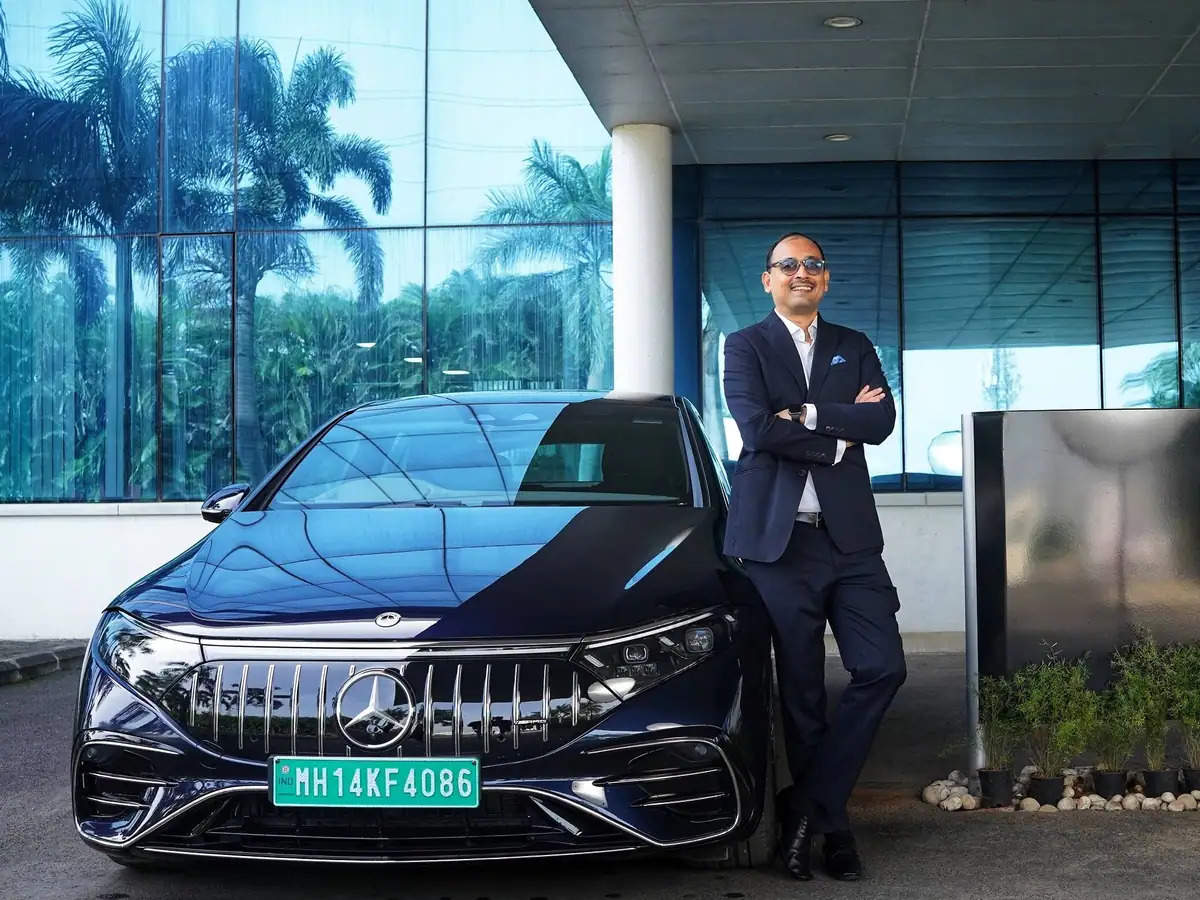
Iconic French fashion designer Coco Chanel once said, “Luxury is a necessity that begins where necessity ends.” Iyer agrees, as it is true for all luxury products, especially premium cars.
“Earlier consumers were more rational, and they were traditional buyers. They knew about cars, but they were not as educated about them. Today’s customers research a lot on the internet. They know a lot about the brand’s history and technology. Sometimes, they even know a bit more than our sales guys,” Santosh Iyer, MD & CEO of the country’s largest luxury carmaker Mercedes Benz, said at the recent episode of ETAuto Unplugged with Industry Expert Arun Malhotra.
Iyer recalled, “When I joined the company, we were selling about 3,000 cars in a year. Last year, we sold about 16,000. The sales in the industry are still small but it has grown multiple times over the past years.” He has been with the company since 2009.
According to him, there are two types of consumers. The first is the luxury dwellers who inherit the lifestyle from their parents. They have been living in luxury since childhood. The second is the aspirational buyers who are the first timers. They are owners of a mass market car, and now they want to make a big shift to the luxury segment.
The customer needs in both the segments are different, he said, and the way the Mercedes connects and engages with them is also completely different. “The first time luxury car buyers’ time to close is more, and their budget decision starts about six months prior to the purchase. These consumers comprise around 30-40% of Mercedes Benz India’s portfolio.”
“Some of the consumers might have used our products abroad, while they were students or working in the US or in Europe. So when they come back here, they want to drive our cars,” Iyer said.
Creating luxury experiences
While the retail consumption of luxury goods like watches, bags, and other personal items has been rising, premium cars still face some resistance.
“Only about 6%-8% of the Indian millionaires buy luxury cars. There is enough wealth in India, but we are also a very rational and frugal society. The demographic shift to the younger, more daring and exposed people will drive the luxury consumption in India,” Iyer said.
The potential exists, but it won’t happen by itself. OEMs have to do their bit to simulate the demand. The society is changing, the demand is increasing but to expect a hockey stick growth will be too naive. The growth will happen for sure, but it will be gradual, he added.
To improve customer experience with our executives, we have a program where every weekend, any employee can take a Mercedes Benz home~
Mercedes-Benz, he said, is doing a lot of experiential marketing and organizing Instagrammable experiences. “However, the brand’s real test is when the sales consultant meets the customer, or when the service advisor talks to the customer. Since a luxury ecosystem does not exist in India at large, getting trained professionals is a challenge.”
The German carmaker has tied up with EHL Hospitality Business School that trains people for luxury experiences. For sales, a lot of training goes into understanding the luxury space and connecting with the customers on their levels, but above all, having product knowledge is extremely important. For service, technology and transparency are essential because a lot of customers send their drivers to the workshops. This demands a different layer of communication between the customers and the service advisors. And time is the biggest luxury for vehicle servicing.
“To improve customer experience with our executives, we have a program where every weekend, any employee can take a Mercedes Benz home to know what the product is and what the brand is before he/she starts telling others. This is open even for the blue collar workers,” Iyer said.
Opportunity for growth
There are positive signs of consumption of luxury in our society. People are spending on buying small ticket items like coffee from big brands, buying costly mobile phones on EMIs, which is again a depreciating asset like a car.
“The corporate earnings ecosystem is largely doing well. People in the top management of successful companies make up our consumers. A bulk of the cars are also purchased by SMEs and small industrialists who run businesses. A lot of people also buy luxury cars as a statement of their financial status,” Iyer said.
He said that the customers are ready to pay a premium at the time of purchase, but they want to be sure about a seamless experience with the car. “So the product has to be the core.”
According to the Mercedes-Benz India head, the luxury car market in India now posts around 40,000 units a year. In 7 years, it is expected to increase, on a conservative estimate, to around 70,000-80,000 units. But all will depend on economic factors including the foreign exchange rates and global issues. By 2030, EV contribution in the luxury segment will easily go above 50%.
In 7 years, it (luxury car market) is expected to increase, on a conservative estimate, to around 70,000-80,000 units.~
About the challenges, he feels that while the central government has a clear policy of zero taxation or a 5% GST on EVs, the state road tax ranges from 15% to 20%, depending on individual policy. There are also some states like Maharashtra and Delhi, where the road tax is zero. A few others like Telangana used to waive road tax, but now they also have withdrawn that.
In his opinion, it is too soon to withdraw road tax exemption on EVs. Further, he expects that if the EV policy is consistent, the infrastructure push is continuous, and the overall GDP growth is stable the luxury sales in the country will steadily increase.

















